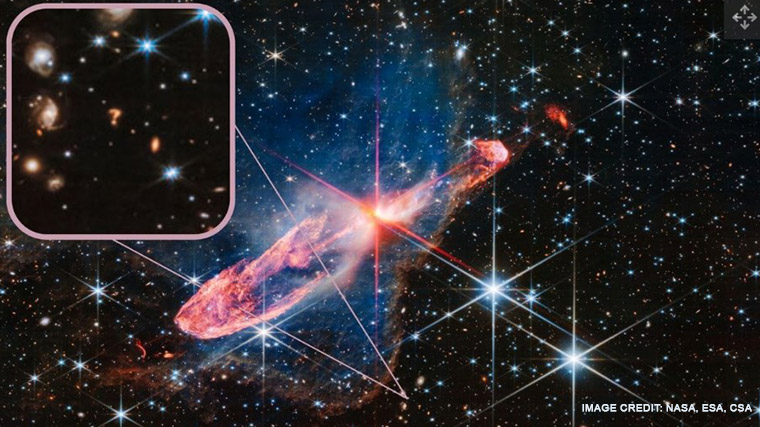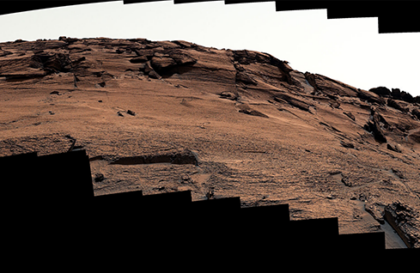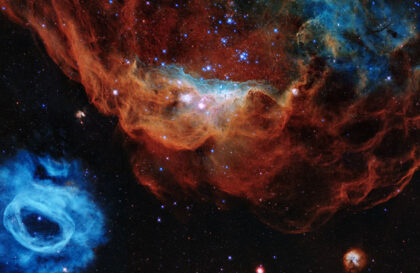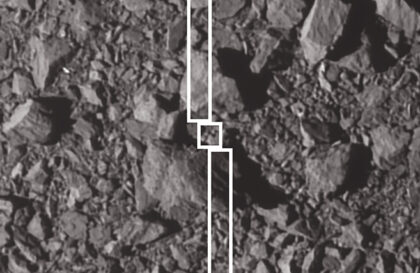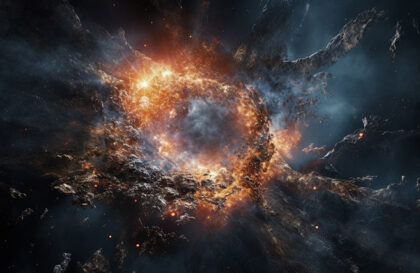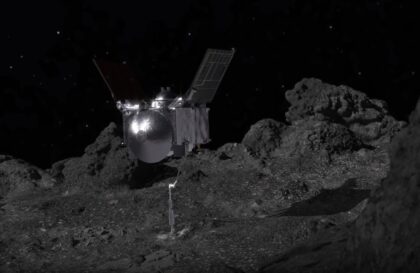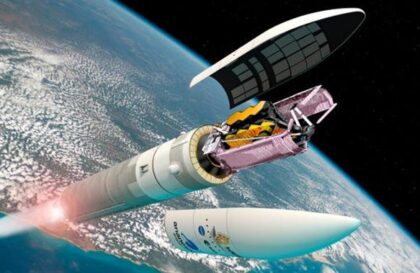In an image taken by the James Webb Telescope on June 26, 2023, and published by the European Space Agency’s JWST team, two actively forming young stars, Herbig-Haro 46/47, surrounded by a feeding disk of matter, have been spotted. They are located 1460 light-years away in the constellation Vela. However, aroused curiosity object lurking in the image under these stars – a colossal cosmic question mark, the color and shape of which make a speculation.
Experts suggest that possible explanations are the effects of galaxy interactions or that this is a snapshot of galaxies in the process of merging. The upper curvature may indicate a larger galaxy undergoing tidal deformation. Collisions and gravitational interactions between galaxies are known to produce complex deformations.

The absence of eight-pointed refractive spikes rules out the possibility of a foreground star. The absence of these features due to the JWST mirror suggests alternative explanations.
The question mark has a red tint to it. That means it’s quite far away from us. We may be seeing this object for the first time. JWST’s deep near-infrared imaging field provides access to the farthest reaches of the Universe up to 13.4 billion light-years away.
But that’s not the only question mark from the James Webb Telescope. A little while earlier.
NASA’s website posted an image showing the gravitational arcs of El Gordo, a cluster of hundreds of galaxies that existed when the universe was about 6.2 billion years old. The site called it a “cosmic teenager.” In the frame, experts have highlighted one area where a bright orange arc is visible. It can also be attributed to the “question mark”, but the authors preferred to call this phenomenon a “fishing hook”. It looks more like an ear to me.
Image credit:
https://www.space.com
https://3dnews.ru/1090954
